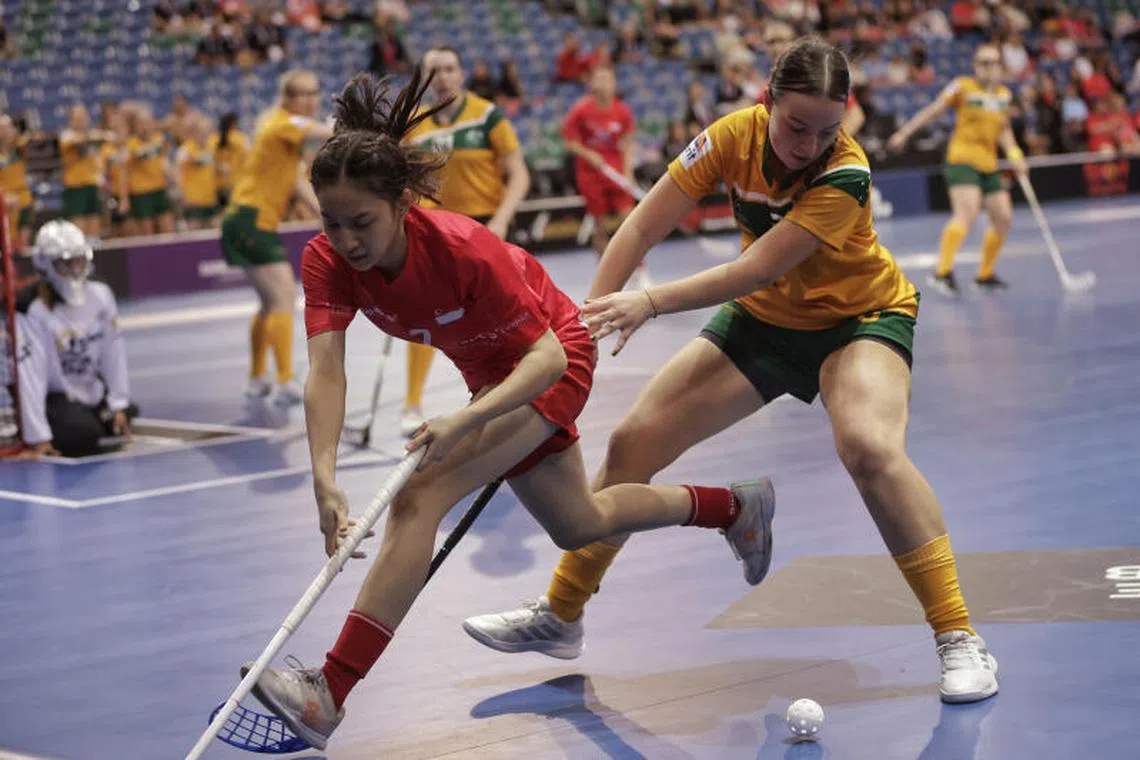Floorball’s Olympic inclusion still a dream, but enhancements needed, says senior official
Sign up now: Get the biggest sports news in your inbox

The International Floorball Federation is looking at ways to make the sport more interesting.
PHOTO: WOMEN'S WORLD FLOORBALL CHAMPIONSHIPS 2023
Follow topic:
SINGAPORE – It is one of the fast-growing sports, with about 3.5 million recreational players globally, but more needs to be done before floorball can make an Olympic debut.
International Floorball Federation (IFF) secretary general John Liljelund, who is in town for the Women’s World Championship, said: “The Olympics, they come if they come. But they will never come if we can’t enhance the sport, if we can’t make it more interesting for the players.
“Having more players, making it more interesting for the spectators, for the media and also the sponsors. Because sports today need money and to get money you need to have a good product and we need to look after the product.
“We have a really good product on the field of play – it needs more tuning in other directions.”
Noting that a sport’s addition to the Olympic programme is largely dependent on the host city – lacrosse and flag football, popular American varsity sports, will debut at the 2028 Los Angeles Games – Liljelund said the IFF’s focus is on developing floorball beyond the quadrennial Summer Games.
About 30 member federations are meeting over the weekend to discuss potential changes to the sport while the IFF has identified five main areas to discuss.
They are organisational development; increasing visibility and awareness in the media; rule changes to make it more understandable and interesting; a new format for the world championship and the introduction of a 3v3 game; and marketing and promotion innovations.
Bridging the gap between the top teams and the rest is also key, noted Liljelund, 59, the former Finland women’s coach.
Floorball is predominantly played in Europe – the ongoing tournament features 12 teams from the continent with the other four from Singapore, Japan, Australia and United States – while Sweden, Switzerland, Finland and Czech Republic have claimed the top four spots in every women’s world championship since 2009.
The Swedes also have won 10 of the 13 editions, including the last eight.
No wonder Liljelund highlighted the victories by world No. 13 Singapore and 12th-ranked Japan over debutantes France (No. 27) and Denmark (10) respectively during the group stages this week.
The sight of empty seats at the OCBC Arena – Dec 2 and 3 each drew an average of 292 spectators – though, was unfortunate, said Liljelund, even while he stressed that the biennial event’s success should not be measured solely by attendance numbers.
He said: “We’re a bit concerned there haven’t been too many Singaporean fans in the stands because one part of the Olympic dream is, this is also a sport not only for the athletes but for fans around the world.”
This is the first time the competition is staged outside of Europe since the Republic hosted the 2005 championship, and Liljelund is hoping Singapore’s solid results
He added: “I believe it will be very positive for floorball in the future in Singapore but it’s also a question of how to build a legacy from the event.”

Athletes fought for victory in the Women’s World Floorball Championship group stage match at OCBC Arena on Dec 3, 2023.
ST PHOTO: KEVIN LIM
Among the IFF’s plans to help level the playing field is establishing a coach education structure for countries, helping teams find a clear playing identity and enhancing the level of coaching.
It is also experimenting with a faster 3v3 format to make it easier for resource-strapped countries where floorball is still developing.
Floorball has featured at the 2017 and 2022 World Games and Liljelund hopes it will appear in other regional multi-sports meets like the Asian Games. The Youth Olympic Games is also on the IFF’s radar as it targets a younger audience.
Liljelund said: “Society and culture of people is changing so rapidly that we need to be able to make changes... It has to be done for the younger generations because they are the ones we need to reach.”

